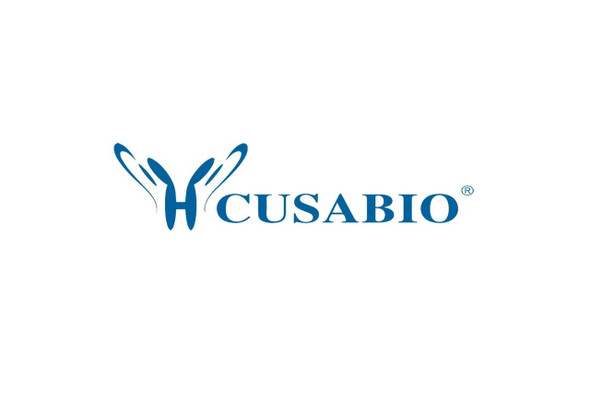Cusabio Influenza A virus Recombinants
Recombinant Influenza A virus Hemagglutinin (HA) (X347S, X348S, X509S, X538S), partial | CSB-YP356048IBA
- SKU:
- CSB-YP356048IBA
- Availability:
- 25 - 35 Working Days
Description
Recombinant Influenza A virus Hemagglutinin (HA) (X347S, X348S, X509S, X538S), partial | CSB-YP356048IBA | Cusabio
Alternative Name(s): HA; Hemagglutinin [Cleaved into: Hemagglutinin HA1 chain; Hemagglutinin HA2 chain]; Fragment
Gene Names: HA
Research Areas: Microbiology
Organism: Influenza A virus (strain A/Bangkok/1/1979 H3N2)
AA Sequence: GIFGAIAGFIENGWEGMSSGWYGFRHQNSEGTGQAADLKSTQAAIDQINGKLNRVIEKTNEKFHQIEKEFSEVEGRIQDLEKYVEDTKIDLWSYNAELLVALENQHTIDLTDSEMNKLFEKTRRQLRENAEDMGNGCFKIYHKCDNACIGSIRNGTYDHDVYRDEALNNRFQIKGVELKSGYKDWILWISFAISCFLLCVVLLGFIMVSCQKGNIRCNICI
Source: Yeast
Tag Info: N-terminal 6xHis-tagged
Expression Region: 330-550aa(X347S,X348S,X509S,X538S)
Sequence Info: Partial
MW: 27.3 kDa
Purity: Greater than 90% as determined by SDS-PAGE.
Relevance: Binds to sialic acid-containing receptors on the cell surface, bringing about the attachment of the virus particle to the cell. This attachment induces virion internalization of about two third of the virus particles through clathrin-dependent endocytosis and about one third through a clathrin- and caveolin-independent pathway. Plays a major role in the determination of host range restriction and virulence. Class I viral fusion protein. Responsible for penetration of the virus into the cell cytoplasm by mediating the fusion of the membrane of the endocytosed virus particle with the endosomal membrane. Low pH in endosomes induces an irreversible conformational change in HA2, releasing the fusion hydrophobic peptide. Several trimers are required to form a competent fusion pore.
Reference: "Conservation and variation in the hemagglutinins of Hong Kong subtype influenza viruses during antigenic drift."Both G.W., Sleigh M.J. J. Virol. 39:663-672(1981)
Storage: The shelf life is related to many factors, storage state, buffer ingredients, storage temperature and the stability of the protein itself. Generally, the shelf life of liquid form is 6 months at -20?/-80?. The shelf life of lyophilized form is 12 months at -20?/-80?.
Notes: Repeated freezing and thawing is not recommended. Store working aliquots at 4? for up to one week.
Function: Binds to sialic acid-containing receptors on the cell surface, bringing about the attachment of the virus particle to the cell. This attachment induces virion internalization either through clathrin-dependent endocytosis or through clathrin- and caveolin-independent pathway. Plays a major role in the determination of host range restriction and virulence. Class I viral fusion protein. Responsible for penetration of the virus into the cell cytoplasm by mediating the fusion of the membrane of the endocytosed virus particle with the endosomal membrane. Low pH in endosomes induces an irreversible conformational change in HA2, releasing the fusion hydrophobic peptide. Several trimers are required to form a competent fusion pore.
Involvement in disease:
Subcellular Location: Virion membrane, Single-pass type I membrane protein, Host apical cell membrane, Single-pass type I membrane protein
Protein Families: Influenza viruses hemagglutinin family
Tissue Specificity:
Paythway:
Form: Liquid or Lyophilized powder
Buffer: If the delivery form is liquid, the default storage buffer is Tris/PBS-based buffer, 5%-50% glycerol. If the delivery form is lyophilized powder, the buffer before lyophilization is Tris/PBS-based buffer, 6% Trehalose, pH 8.0.
Reconstitution: We recommend that this vial be briefly centrifuged prior to opening to bring the contents to the bottom. Please reconstitute protein in deionized sterile water to a concentration of 0.1-1.0 mg/mL.We recommend to add 5-50% of glycerol (final concentration) and aliquot for long-term storage at -20?/-80?. Our default final concentration of glycerol is 50%. Customers could use it as reference.
Uniprot ID: P03441
HGNC Database Link: N/A
UniGene Database Link: N/A
KEGG Database Link: N/A
STRING Database Link: N/A
OMIM Database Link: N/A









